THE BURDEN OF EXCESS - 2020
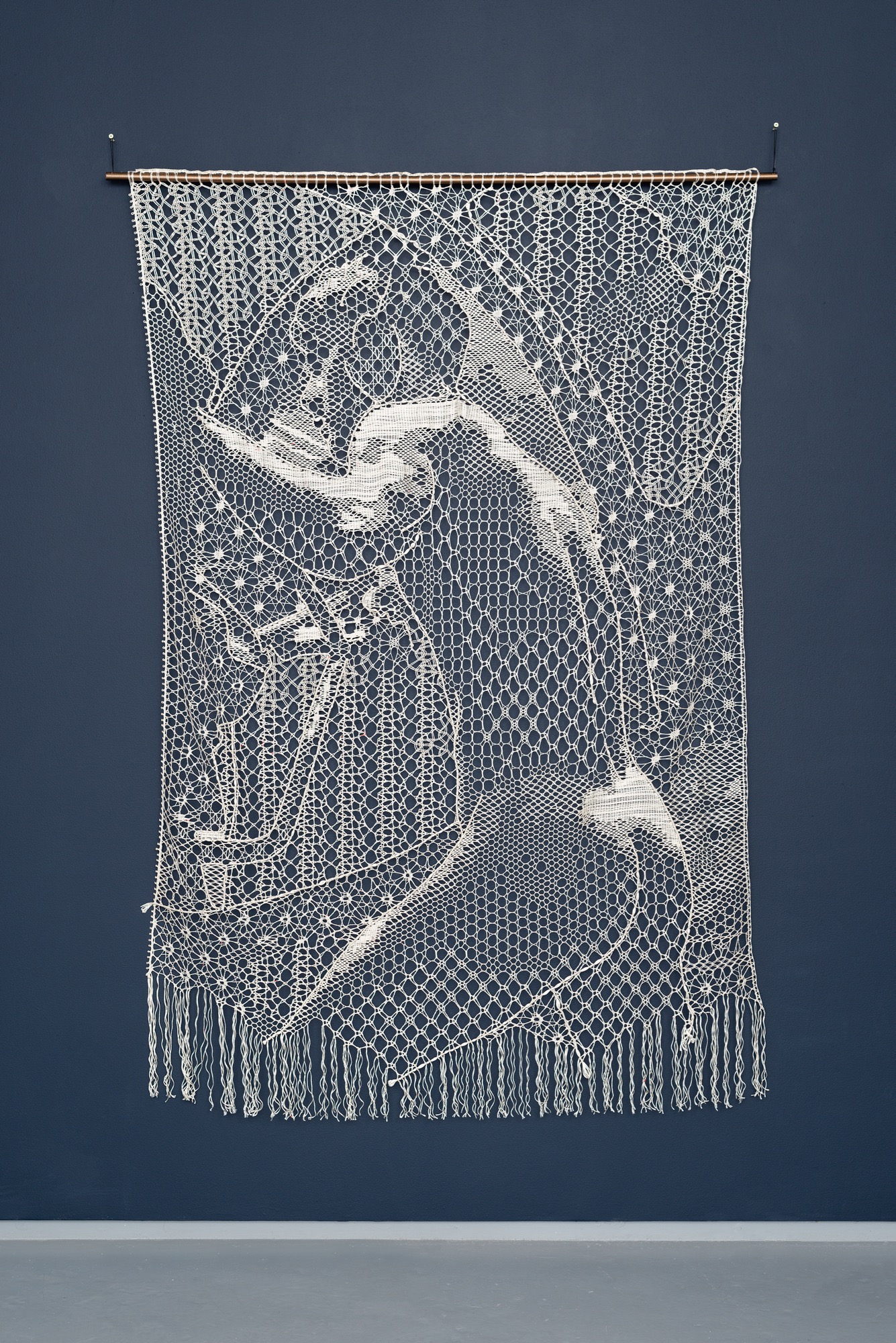
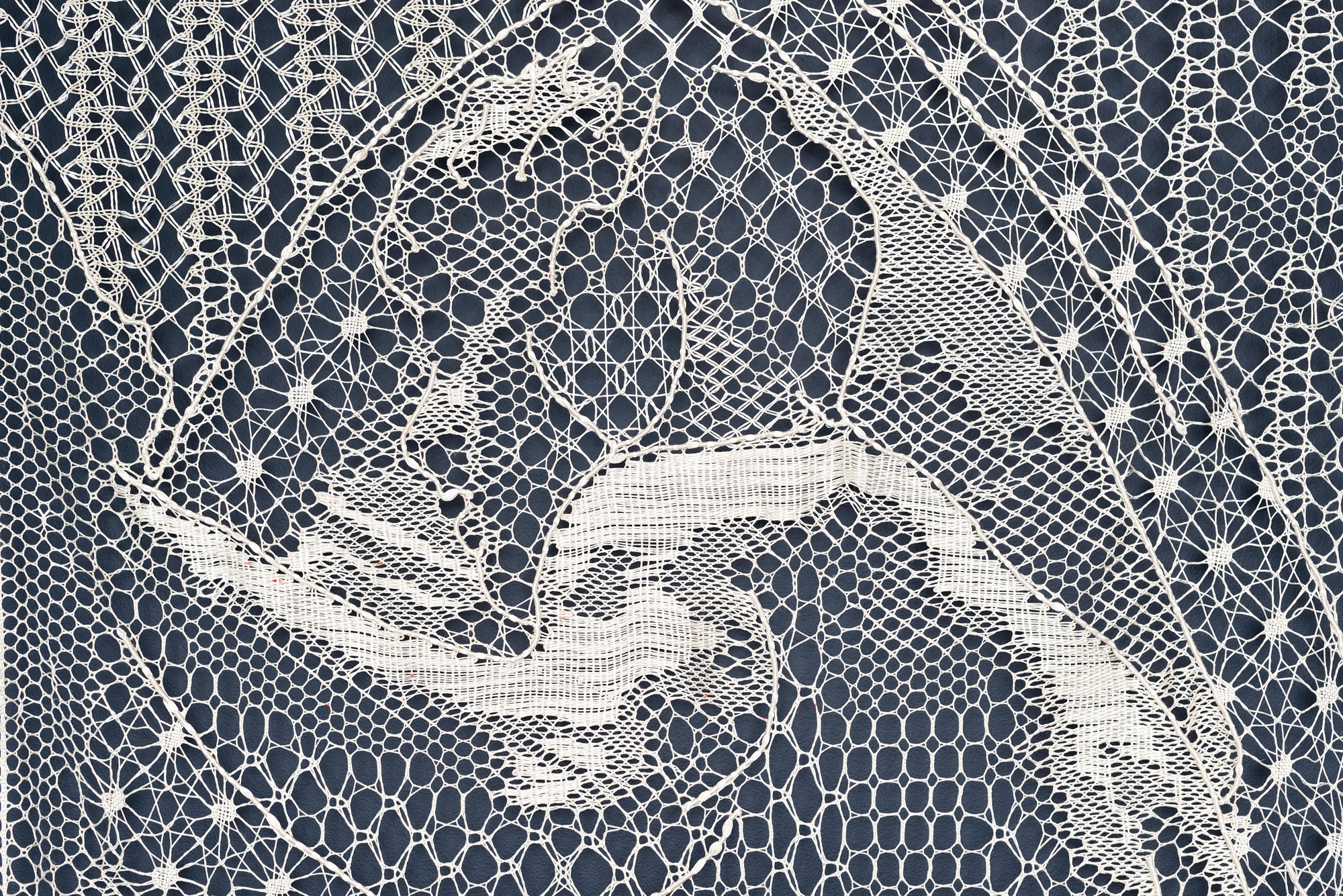
Pierre Fouché. 1994.77 or Lebenslänglichen Explosionsglück, 2020.
Rayon chords from a World War II parachute.
130 x 180 cm. Collection: Norval Foundation
994.77 or Lebenslänglichen Explosionsglück (2020) is a bobbin lace work crafted from World War II parachute cord (Rayon) gifted to me. The medium’s provenance was authenticated by a crumpled piece of newspaper dating from the period, used as the core of a ball of 2m length cords. Lovingly sorted and preserved by generations of women, this thread holds the spotted residue of bright orange length markers, possibly dyed with mercurochrome. With too many to edit out in the thread selection and too few to incorporate in any meaningful way, these blemishes add nuances of stochasticism to the greater purpose of the work: an invitation to contemplate what humanity values enough to preserve.
The figure rendered is a bobbin lace interpretation of an iconic WWII photograph taken in 1944 by Horace Bristol; currently in the collection of the Brooklyn Museum. The photograph is not only a subject of historical relevance but also documents a staggeringly beautiful young man. Its uncanny contemporary feel highlights the absurdity of enlisting young men and sending them off to kill one another under the guise of patriotism. The artwork title is derived from two German words extracted from the found piece of newspaper by the artist. Combined, the words read: “life-long explosive happiness”.
PF 2020
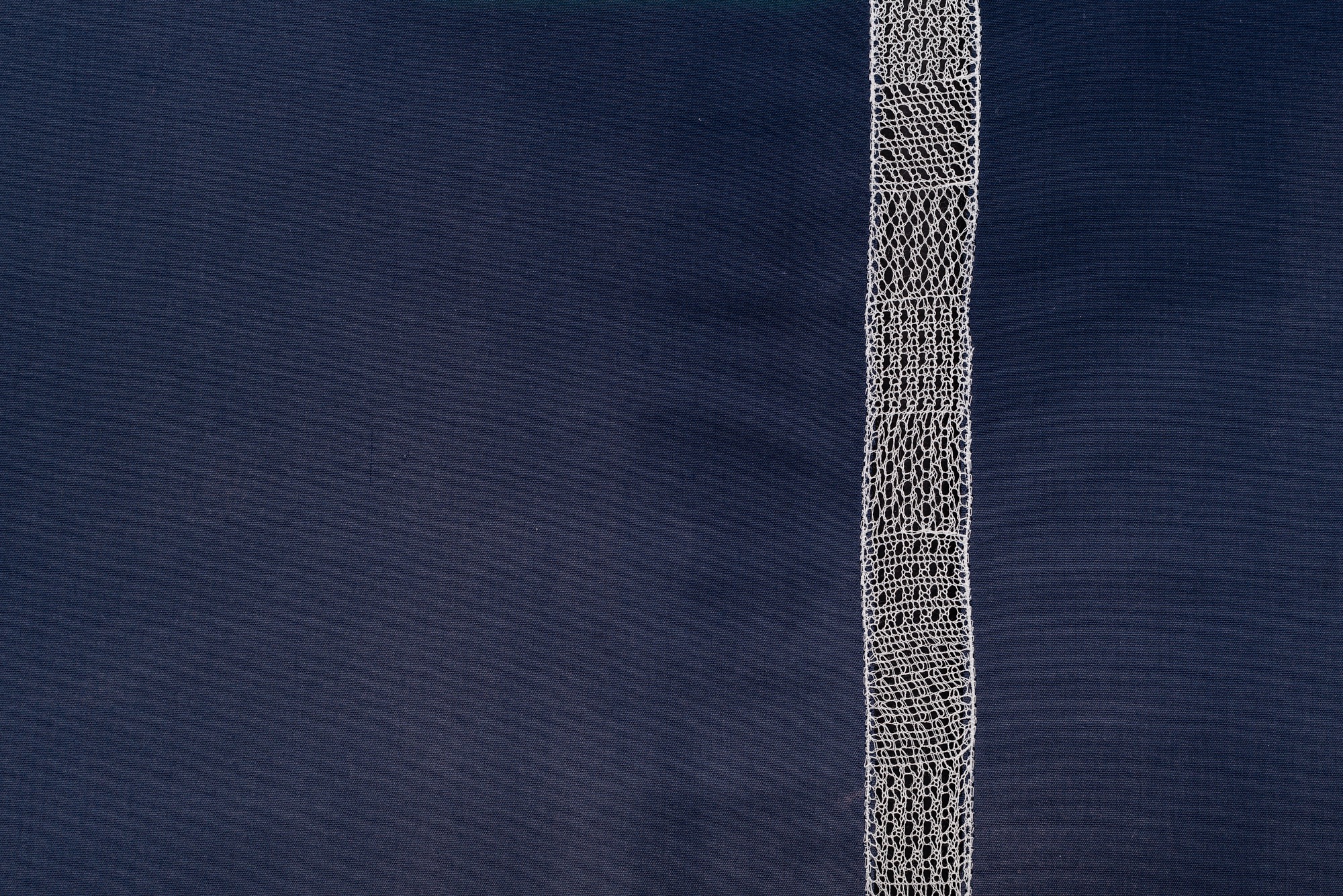

Pierre Fouché. Sampler[]3x4 - or the Burden of Excess, 170/2. 2020
Egyptian cotton bobbin lace, mounted as an insertion on a poly-cotton lace pillow cloth, worn and faded from years of lacemaking.
75 x 51cm (unframed), actual lace dimensions: 2.5 x 55cm.
In Sampler[]3×4 – or the Burden of Excess (2020), I interpret a set of thread geometries discovered by an algorithm written by Canadian computer scientist, mathematician, and lacemaker, Veronika Irvine. This algorithm computes the variety of ways threads can intersect based on the rules of bobbin lace grounds. In Irvine’s article, Developing a Mathematical Model for Bobbin Lace, published in the Journal of Mathematics and the Arts in 2014, she posited a mathematical representation of the lace craft with potential applications well beyond textiles, patterns, and adornment.
My sample shows 23 of the millions of new grounds already discovered by Irvine’s algorithm and reflects my effort to translate these into bobbin lace designs; which still require a lacemaker’s interpretation. The grounds in my sampler are all based on a 3×4 tile of possible thread intersections. The possibility of multiple outcomes is the ‘burden of excess’ of this endeavour, as any geometric mesh possible to be made in lace can have hundreds of variations based on what stitches and combinations of stitches are used, and the way the thread’s movements are interpreted with the inclusion or not of support pins at each intersection.
PF 2020
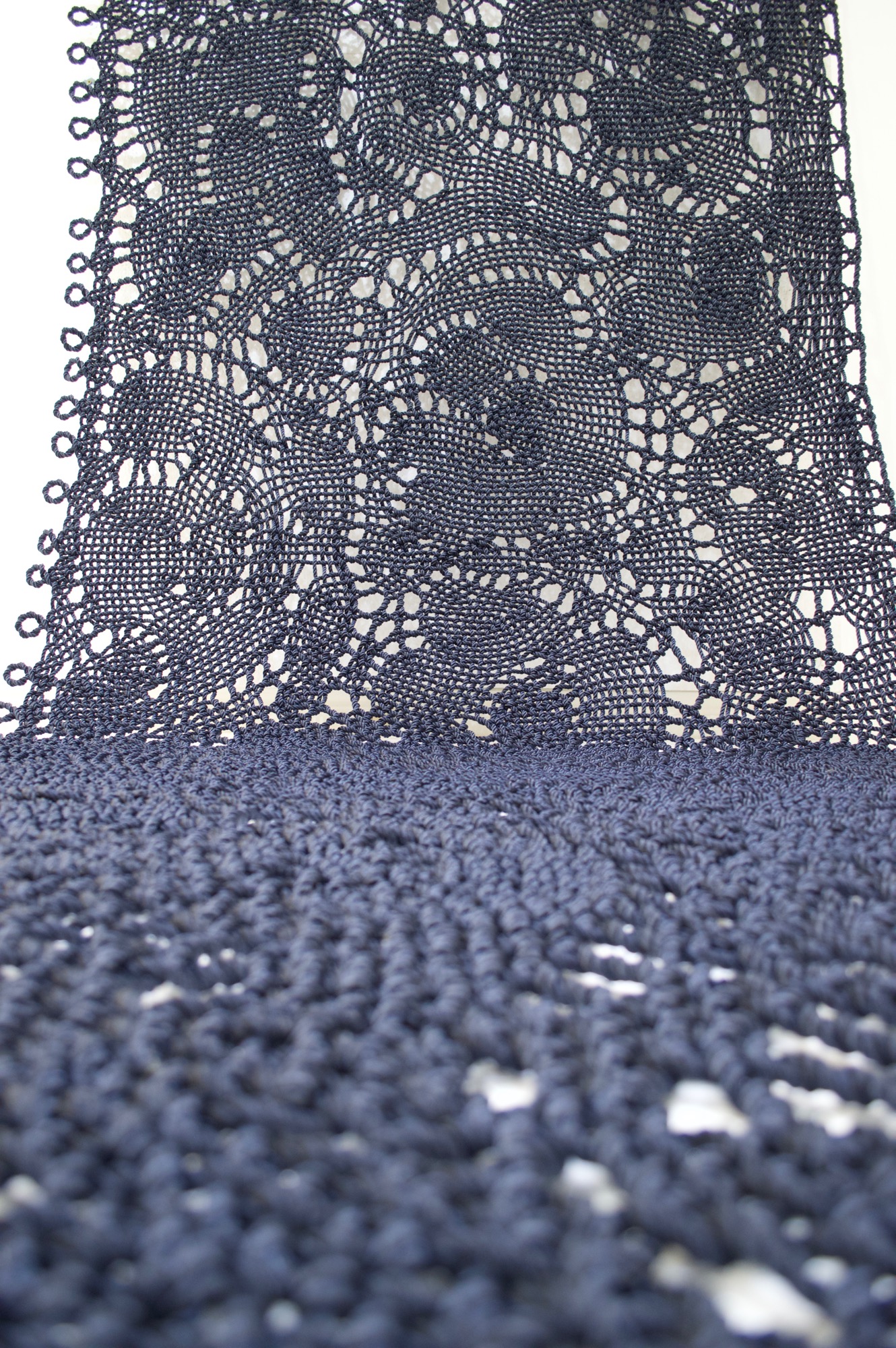
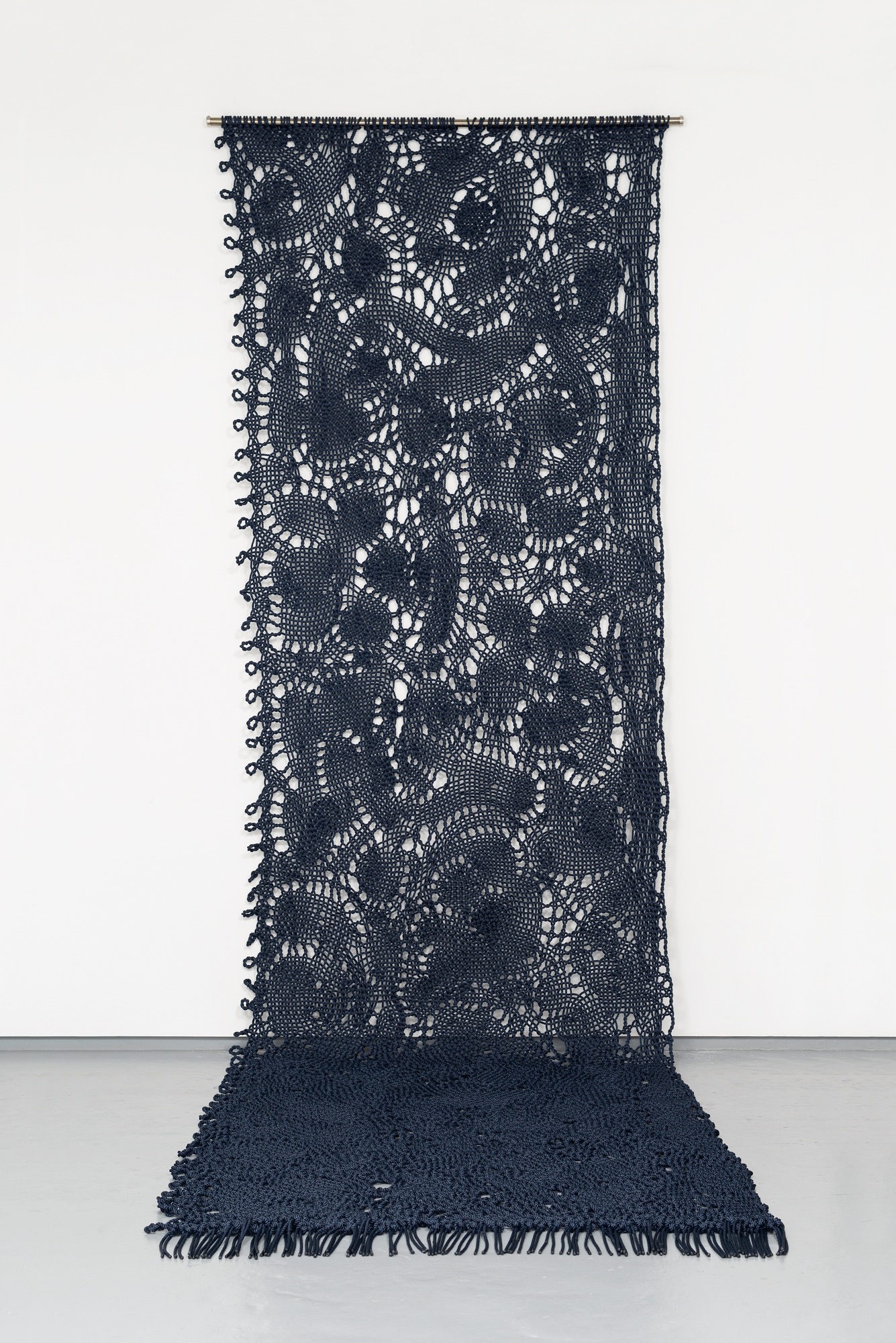
Pierre Fouché. 06.642 / Temporal Consciousness Access [multiple I]. 2020.
6mm Polyester corded rope,
5 x 1.48m.
06.642 or Temporal Consciousness Access is a large-scale bobbin lace reconstruction of a 17th century proto Binche length of lace. The number in the title refers to the source artifact's accession number. I viewed the Dutch piece (1,1/4 inch wide) at the Ratti Textile Centre in the Metropolitan Museum, New York, in 2019. The piece's uniqueness struck me; an early lace design referred to as “Opaque Lace” for its densely worked cloth areas and lack of open net stitches. This style would later evolve into Binche lace, known for its erratic thread movements and distinctive six-pair “snowflake” motifs.
I reconstructed the pattern by tracing the threads from a high-resolution photograph I took of the piece. The hand-spun linen of the original was uneven and worn, and the thread movements were nearly impossible to discern in places, taking me four months to resolve and trace the pattern. In order to understand the original design, I had to enter the mind of a Baroque lacemaker. While most of the original lacemaker’s technical problem-solving decisions were uncannily familiar (representing an unbroken lineage of the technique’s development from then to today) others were completely counterintuitive to what a contemporary lacemaker would do; it made me wonder if this rationale signified a Baroque world-view, an idiosyncratic personality, or some form of knowledge, now obsolete or lost to history.
PF 2020